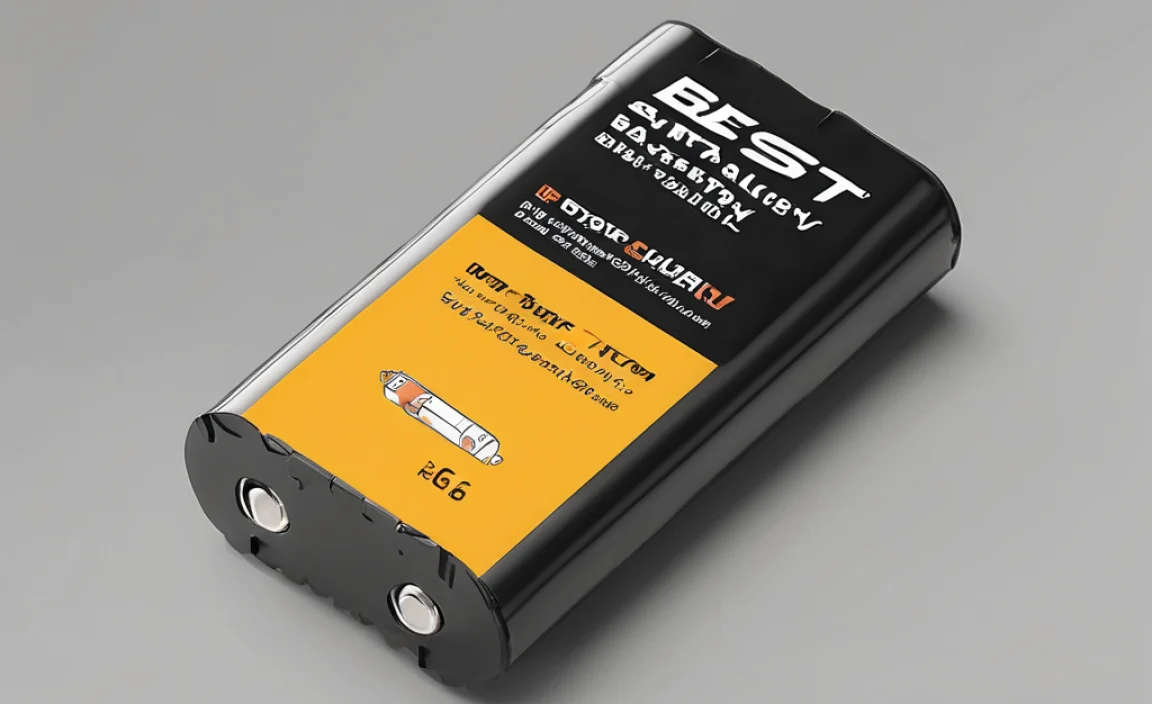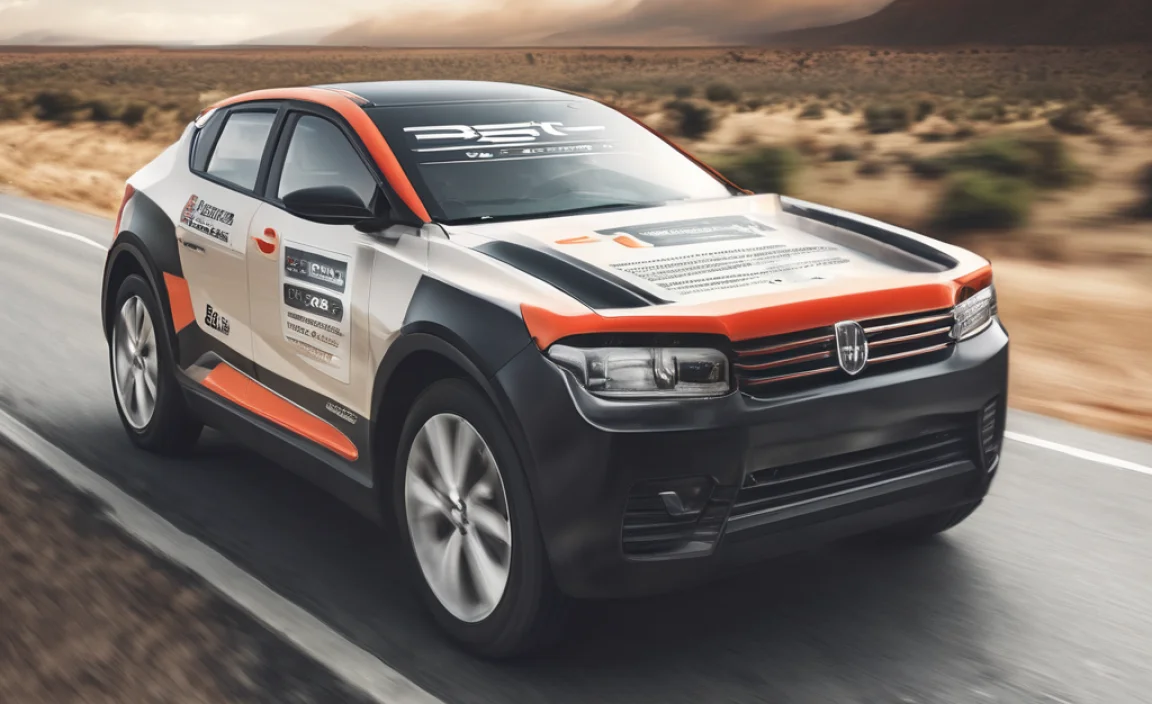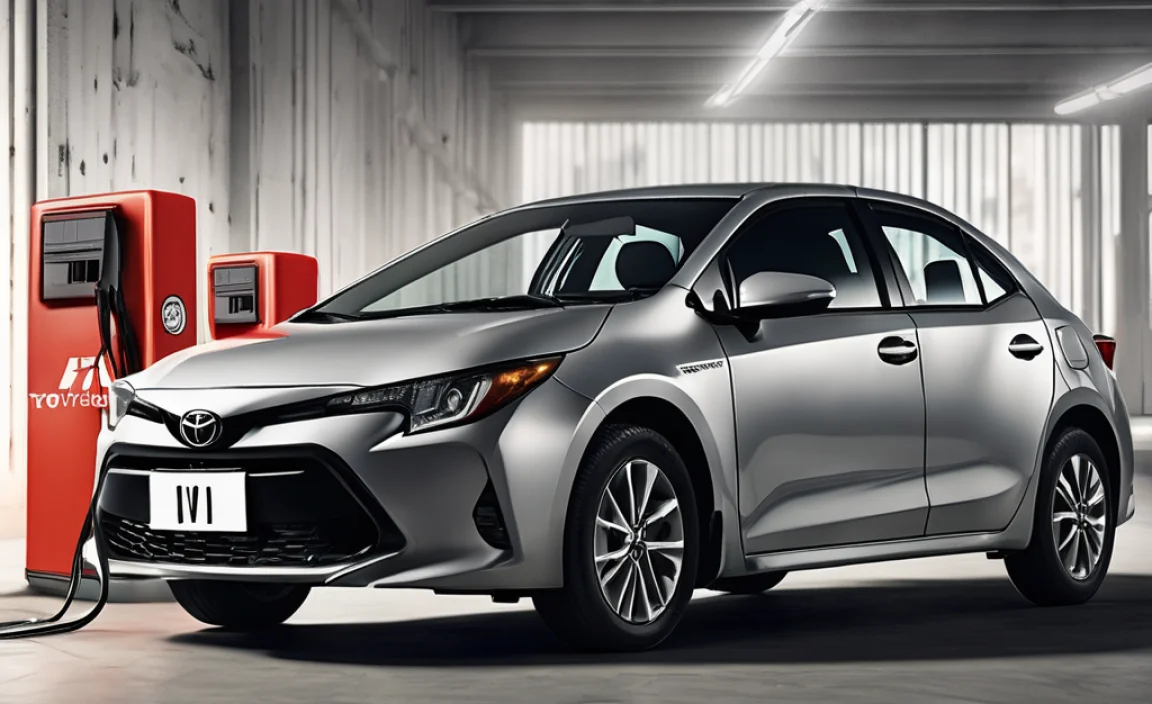Need to connect more Christmas lights but short on outlets? An extension cord adapter is your simple, safe go-to for powering up your holiday displays. These handy devices let you plug multiple cords into a single power source, making your decorating easier and brighter.
Christmas lights are pure magic, aren’t they? That twinkle, the festive glow – it’s what makes the season feel so special. But then comes the decorating, and reality hits: not enough outlets! You end up with a tangle of cords and a bit of worry about overloading the few sockets you do have. It can feel like a holiday decorating hurdle. But don’t let that dim your festive spirit! There’s a super simple solution that’s safe, effective, and easy for anyone to use. We’re talking about extension cord adapters. These little helpers are the unsung heroes of Christmas light displays, turning a frustrating problem into a joyous celebration. Let’s dive into how they work and why they’re your essential holiday lighting best friend.
What Exactly is an Extension Cord Adapter?
Think of an extension cord adapter as a smart splitter for your power. The most common type you’ll see for Christmas lights is often called a “power tap” or a “multi-plug adapter.” Instead of having just one plug that goes into your wall socket or another extension cord, it has multiple outlets. This allows you to plug in several different cords (like your strings of lights) into a single point of power, effectively multiplying your available outlets.
These adapters come in a variety of forms:
- Basic Multi-Plug Adapters: These usually have two or three grounded outlets on a single unit that plugs directly into a wall outlet.
- “Spider” or “Octopus” Adapters: These have one main plug that goes into the power source, and then several cords or outlets branch out from a central point, like the legs of a spider. This can be useful for spreading power around an area.
- Heavy-Duty Outdoor Adapters: Specifically designed for the elements, these are more robust, often with covers to protect the connections from rain and snow, and are rated for outdoor use.
The key takeaway is that they are designed to give you more connection points from one power source. But just like choosing the right extension cord, selecting the right adapter is important for safety and getting the most out of your decorations.
Why You Need an Extension Cord Adapter for Holiday Lights
Let’s be honest, Christmas decorators are often ambitious. We dream of icicle lights dripping from the gutters, a dazzling tree on the lawn, and maybe even some cheerful inflatable characters. All of this requires power. Often, the most convenient outlets are far from where you need them, or the outlets near your dream display spots are already spoken for.
Here’s where the adapter shines:
- More Lights, Less Hassle: Do you have a favorite set of lights but only one outlet to plug it into? An adapter lets you plug that set in, and still have space for another string or even a festive animatronic. It’s like magically creating more power points right where you need them.
- Reduce Cord Clutter: Instead of running multiple, sometimes long, extension cords from different ends of your house, an adapter can consolidate several light strings into one primary power connection, tidying up your setup.
- Reach Tricky Spots: Sometimes the perfect spot for your lights is just out of reach of a standard extension cord. An adapter allows you to connect multiple shorter cords together or to power several devices from a single, strategically placed outdoor outlet.
- Safety First: While it might seem like you’re just adding more plugs, using an adapter designed for the load can actually be safer than daisy-chaining cheap power strips or using undersized extension cords. It ensures connections are secure and the power is managed appropriately.
Understanding Adapter Types and Features
Not all adapters are created equal. For Christmas lights, especially those used outdoors, you’ll want to pay attention to a few key things. Roy Walker’s advice? Always check the rating!
Indoor vs. Outdoor Adapters
This is the most critical distinction. Using an indoor adapter outside is a recipe for disaster. Moisture, dust, and temperature changes can damage the adapter and create serious electrical hazards.
- Indoor Adapters: These are typically made of lighter plastic and are not designed to withstand weather. They are perfect for indoor trees, indoor displays, or plugging in multiple devices in a single room.
- Outdoor Adapters: These are built tougher. Look for features like:
- Heavy-duty construction: Usually made of thicker, more durable plastic.
- Weather-resistant seals: Often have covers that close over the outlets to keep rain and snow out.
- GFCI compatibility: Many are designed to work with Ground Fault Circuit Interrupter (GFCI) outlets, which provide an extra layer of shock protection, especially important in damp environments. You can learn more about GFCI outlets on the U.S. Department of Energy’s Energy Saver website.
Wattage and Amperage Ratings
This is where we get a little technical, but it’s super important for safety. Just like extension cords, adapters have limits on how much power they can handle. If you plug in too many lights, you can overload the adapter, the outlet, or even the circuit breaker, which can cause damage or a fire.
Key Terms:
- Wattage (W): This is the total amount of power your lights and other devices will draw.
- Amperage (A): This is the amount of electrical current flowing through the circuit.
You’ll often see ratings like 13A or 1875W. These numbers tell you the maximum load the adapter can safely handle. To figure out the total wattage of your lights:
1. Check the label on your light strings: Most LED Christmas lights use very little power, often just a few watts per string. Older incandescent lights use much more.
2. Add up the wattage of all the lights and devices you plan to plug into the adapter.
3. Compare this total to the adapter’s rating. Always leave a little buffer! Don’t push it right to the limit. A good rule of thumb is to stay below 80% of the maximum rating for continuous use.
Number of Outlets
Adapters come with varying numbers of outlets, from two all the way up to six or more. Consider how many light strings or decorations you realistically need to plug into one spot. More outlets mean more power draw, so always check the total wattage capacity.
Here’s a quick comparison of common adapter types:
| Adapter Type | Typical Use Case | Pros | Cons | Safety Consideration |
|---|---|---|---|---|
| Basic Indoor Multi-Plug | Indoor decorating, plugging in lamps or electronics in a single room. | Inexpensive, simple to use, compact. | Not for outdoor use, limited outlet count. | Ensure total wattage doesn’t exceed the adapter’s rating. |
| Indoor “Spider” or “Octopus” | Spreading power around a larger indoor space, powering multiple devices from one outlet. | Distributes power over a wider area, often flexible cable length. | Can create its own visual clutter if not managed, not for outdoor use. | Check individual cord ratings and total load capacity. |
| Heavy-Duty Outdoor Adapter | Connecting outdoor Christmas lights, decorations, and powered devices. | Weather-resistant, durable, safer for outdoor environments. | More expensive, bulkier. | Must be rated for outdoor use; ensure GFCI compatibility where needed. |
| Outdoor Strip with Individual Outlets | Powering multiple outdoor items with some space between outlets. | Good for larger decorations or lights needing more separation. | Can be bulky, requires careful placement and cord management. | Always use outdoor-rated models and check combined wattage. |
How to Safely Use Your Extension Cord Adapter
Using an adapter is straightforward, but safety is always my top priority. Here’s a step-by-step guide to ensure your holiday lights glow without any worries.
Step 1: Choose the Right Adapter
As we’ve discussed, this is the most crucial first step. For outdoor lights, it must be an adapter specifically rated for outdoor use. For indoor lights, a good quality indoor adapter will do. Always check the wattage and amperage ratings to make sure it can handle the load of your lights. If you’re unsure, err on the side of caution and choose an adapter with a higher rating or consult the manufacturer’s recommendations.
Step 2: Inspect Your Equipment
Before plugging anything in, take a look at your adapter, extension cords, and light strings. Is anything frayed, cracked, or damaged? If so, don’t use it. Damaged cords and adapters are a major electrical hazard. For outdoor use, ensure all connections are tight and any protective covers are in place.
I recommend checking out resources like the Consumer Product Safety Commission (CPSC) for general holiday decorating safety tips. They have great advice on keeping your home and family safe.
Step 3: Connect Your Extension Cord(s) First
If you are using an extension cord with your adapter (especially common with outdoor setups where the adapter might plug into an outdoor GFCI outlet), plug the extension cord into the main power source (the wall outlet or GFCI). Then, plug your adapter into the end of the extension cord.
Step 4: Plug in Your Lights
Now, plug your Christmas light strings into the outlets on the adapter. Do this one by one. As you plug each string in, keep an eye on the total power draw. If you have a particularly long run of lights or many devices, it’s a good idea to calculate the total wattage again. If you exceed the adapter’s or circuit’s limit, your breaker will trip, or worse, you could overheat the wiring.
Step 5: Secure and Protect Connections (Especially Outdoors)
For outdoor setups, make sure all connections between the plug, adapter, extension cord, and light strings are as protected from the elements as possible. Many outdoor extension cords and light strings have connectors that can lock or seal together. For adapters, ensure any weather flaps are closed securely over the plugged-in cords.
It’s also a good practice to keep connections off the ground. You can use clips or place them on a raised surface to prevent them from sitting in puddles or snow. Avoid running cords across walkways where they can be a tripping hazard or get damaged.
Step 6: Power Up and Monitor
Once everything is plugged in and secured, you can turn on the power at the main outlet or breaker. Your lights should now shine brightly! During the first hour of use, it’s wise to periodically check the adapter and extension cord for any signs of overheating – a warm to the touch feeling is normal, but anything too hot to hold comfortably is a warning sign to unplug immediately.
Step 7: Unplug Safely
When it’s time to take down the decorations, or if you need to unplug something, always switch off the power at the main outlet first. Then, carefully unplug each light string from the adapter, and finally, unplug the adapter itself. For outdoor setups, disconnect cords from the power source and then separate them, ensuring any protective covers on the adapter are closed.
Common Pitfalls to Avoid
Even with the best intentions, there are a few common mistakes people make with extension cord adapters that can lead to trouble. My goal is to help you avoid them!
- Using Indoor Adapters Outdoors: I can’t stress this enough. Water and electricity are a dangerous mix. Always buy outdoor-rated products for outdoor use.
- Overloading the Adapter: This is like trying to pour a gallon of water into a pint glass. It just won’t work and can cause damage. Always calculate your total wattage and stay well within the adapter’s stated limits.
- Daisy-Chaining Too Many Adapters: While you can plug an adapter into an extension cord, and some setups involve multiple extension cords linked together, avoid plugging adapter into adapter into adapter. This creates a complex power path that’s harder to manage and increases the risk of overload and overheating.
- Ignoring Damaged Cords: A small nick in the insulation of a cord or adapter can expose the wires. This is a shock and fire hazard. If you see damage, discard the item and replace it.
- Running Cords Under Rugs or Furniture: Indoors, this can cause cords to overheat and fray. Outdoors, it creates tripping hazards and can damage the cord. Keep cords in plain sight or protected in ways that allow for airflow and easy inspection.
- Forgetting About Cold Weather: Plastic can become brittle in freezing temperatures. Older or cheaper adapters might crack more easily when being handled outside in the cold.
Extending Your Reach: Deciding Between Adapters and Longer Cords
Sometimes, you might wonder if it’s better to get a longer extension cord or use an adapter with a shorter one. The best choice really depends on your specific needs and the situation.
| Factor | When an Adapter Might Be Better | When a Longer Cord Might Be Better |
|---|---|---|
| Number of Devices | You need to power several different light strings or decorations from one relatively close outlet. | You just need to reach a single, distant outlet for one or two light strings. |
| Outlet Availability | The closest outlet has limited plug space, or you need to consolidate many lights into one area. | You have plenty of outlets but none are close enough to your decorating spot. |
| Power Draw | You are powering low-wattage devices (e.g., LEDs) where the total load is well within the combined capacity of the adapter and the primary cord. | You are concerned about the total amperage and want to minimize connections to ensure the safest, most direct power delivery. Longer cords with heavier gauges are often rated for higher loads. |
| Flexibility | You want to connect multiple sets of lights that fan out from a central point. | You need a straight, uninterrupted run from power source to decoration. |
| Safety Regulations | Using an outdoor adapter is permitted and safely managed. (e.g., not plugging one adapter into another in a long chain). | To comply with safety guidelines that might limit the number of connections or extension cords. For very long runs, a single, heavy-gauge cord is often preferred over multiple shorter ones and an adapter. You can find guidance on proper cord selection from manufacturers or electrical safety organizations. |
| Cost & Simplicity | Adapters can be cheap, but multiple sets of lights might require a more expensive, higher-wattage adapter. | A single, high-quality, long extension cord can be an investment, but simplifies connections. |
Generally speaking, for powering multiple low-wattage LED Christmas lights, a quality outdoor adapter plugged into a suitable outdoor-rated extension cord is an excellent and safe solution. If you’re powering very high-draw items, or need to run power a very long distance for just one or two things, a single, heavy-duty, properly gauged extension cord might be the more direct and safer option. Always consider the combined load and use equipment that is rated for the job.
Frequently Asked Questions (FAQ)
Q1: Can I plug an extension cord into an extension cord adapter?
A: Yes, you can. The most common setup for outdoor lights involves plugging an outdoor-rated extension cord into an outdoor GFCI outlet, and then plugging your outdoor-rated extension cord adapter into the end of that extension cord. Just ensure that the combined load (all the lights plugged into the adapter and any other devices on the same circuit) doesn’t exceed the capacity of the lowest-rated component, and that all cords and adapters are rated for outdoor use.
Q2: How many Christmas light strings can I plug into one adapter?
A: This depends on two main things: the adapter’s wattage/amperage rating and the wattage of each light string. Smaller LED strings might only use 5-10 watts each, allowing you to plug many into a single adapter. Energy-hogging incandescent lights will drastically limit how many you can connect. Always add up the total wattage of all your lights and compare it to the adapter’s



